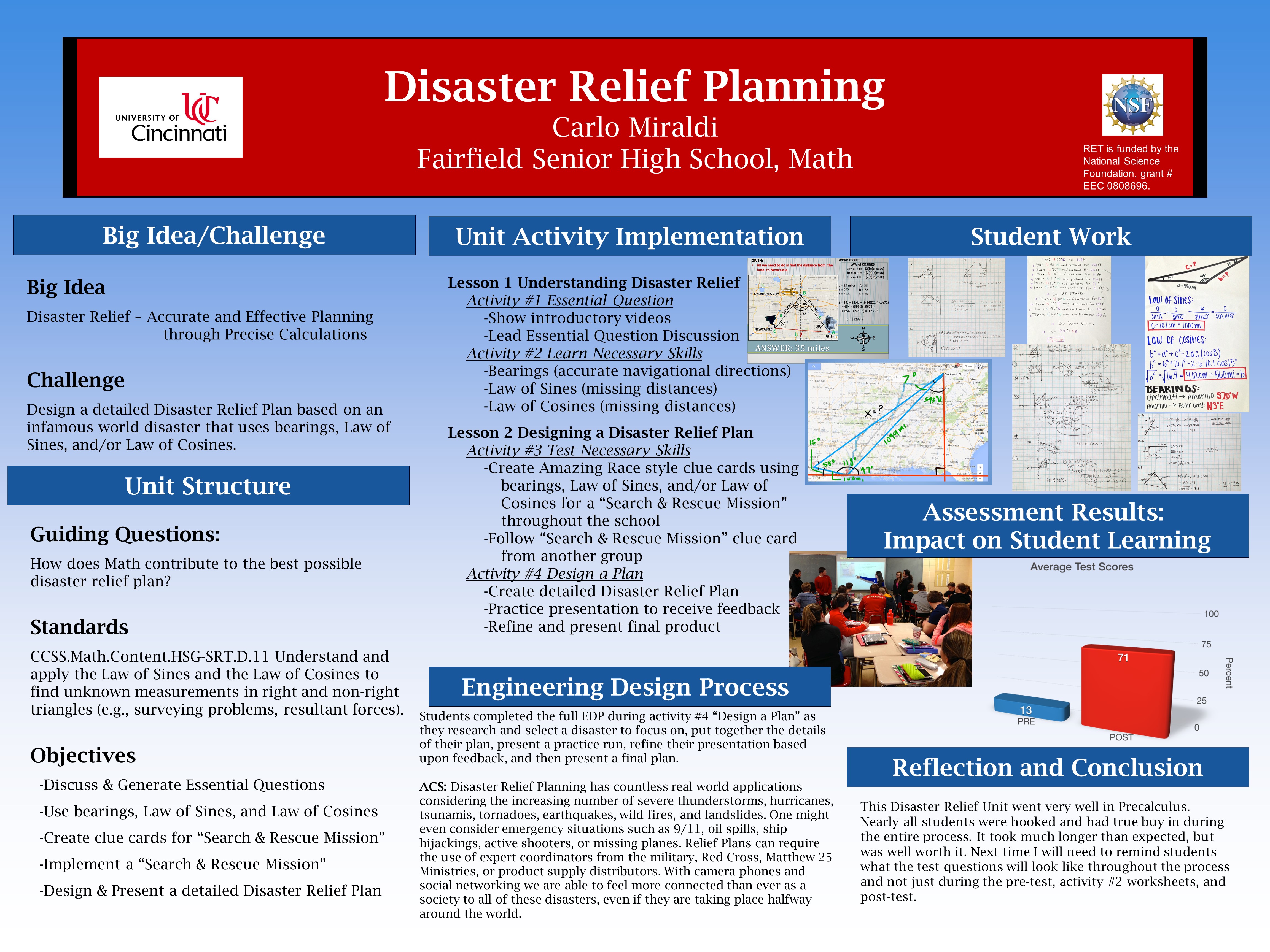Research Experience for Teachers (2013-2014)
Disaster Relief - Precise Calculations When It Matters Most
 |
||||||
|
||||||
|
Pre/Post Test: Unit Assessment |
||||||
|
The Big Idea (including global relevance) Disaster Relief |
|
Essential Questions How does Math contribute to the best possible disaster relief plan? |
|
The Hook
To introduce the importance of disaster relief, we will watch several different videos covering both the severity of the actual disasters and then the behind the scenes work that is involved in providing relief after these disasters strike. |
|
The Challenge Design a detailed relief plan based on an infamous world disaster. This challenge will be the final activity after students will have already completed several small scale local challenges to build up to the culminating challenge. This plan will need to include accurate calculations for navigational directions, acceptable supply weight, fuel consumption, and flight times. Groups will present their final plans for students to vote on the best one. |
|
Guiding Questions
|
ACS (Real world applications; career connections; societal impact)
Natural disasters are happening all around us. With camera phones and social networking we are able to feel more connected to each of these events even if they occur halfway around the world. Recently with Katrina in New Orleans, the earthquake of Haiti, and the tsunamis in India and Japan students should easily realize the need for accurate navigational directions and precise calculations in a time of need when lives are on the line immediately following a disaster.
The United States of America has always been compelled to help anyone in need all across the world. When we do give our time and money to help those in need, we want to know that it is being utilized effectively in the best way possible.
Disaster Relief Coordinator with the military, Red Cross, or Matthew 25 Ministries. Any product supply distribution logistics.
Misconceptions
Unit Lessons and Activities
- Lesson 1: Understanding Disaster Relief
- Activity 1: Essential Question (1 Day)
- Activity 2: Learn Necessary Skills (1 Days)
- Lesson 2: Designing a Disaster Relief Plan
- Activity 3: Test Necessary Skills (2 Days)
- Activity 4: Design a Plan (5 Days)
- Evidence of CBL: Activity 4
- Evidence of EDP: Activity 4
Additional Resources
Library and internet for research on disasters.
